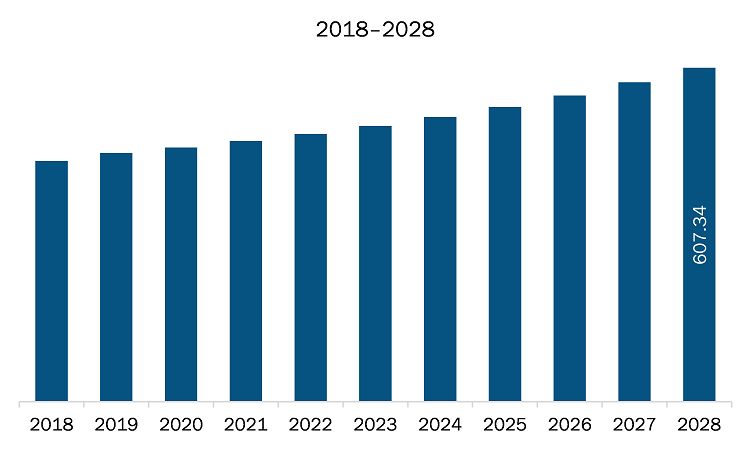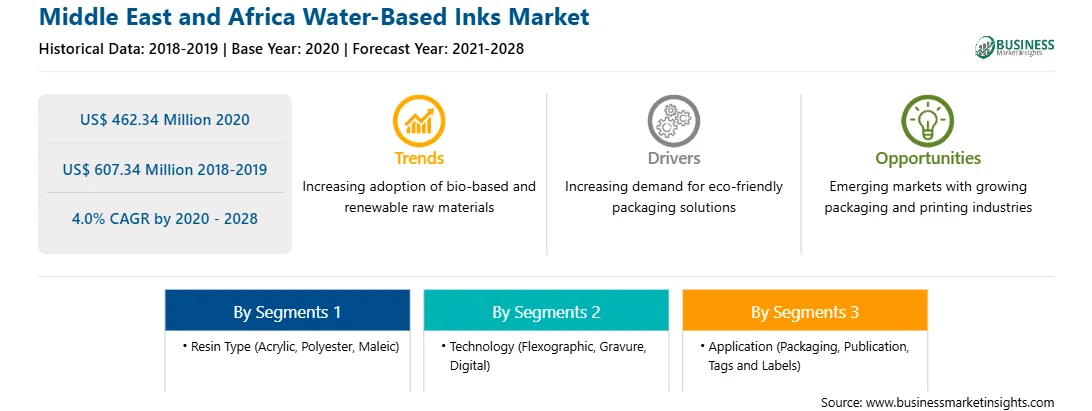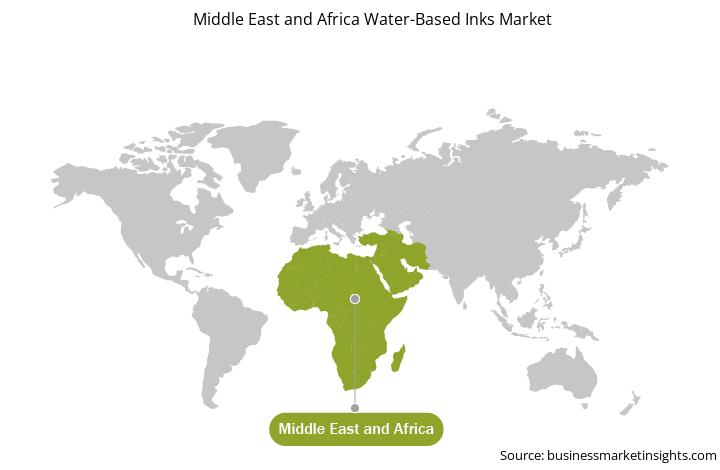The Middle East and Africa region include countries such as South Africa, Saudi Arabia, UAE, and the Rest of the Middle East and Africa. The Middle East & Africa is an evolving market for various industries such as medical, defense, automotive, and others. The Middle East & Africa market is experiencing rapid development with the growth of markets such as Dubai, Abu Dhabi, and Iran. New investment and better marketing strategies have led to the capture of market share in the Middle East and African Region. The shift in consumer lifestyles, coupled with industrialization and urbanization, enhances construction activities, which is eventually expected to stimulate the demand for the water-based ink market. As there is an increase in sales of products, the packaging market is also growing to cater to the needs of both the consumers and retailers. Countries like Qatar have disposable income which has led to an increase in purchasing power which will drive the packaging market in Middle East and Africa. The key determining factors of packaging are varying consumer trends, light weight of the products, different sizes, shelf life and ease of recycling.
Saudi Arabia has the highest number of COVID-19 cases in the Middle East & Africa, followed by Turkey and UAE, among others. The UAE was the first country in the Middle East & Africa to report a confirmed case of COVID-19. Due to lockdown in Middle East & African countries, various chemicals & materials companies remain closed which led to the reduction in the sale of various products which has drastically altered the growth status of the water-based Inks industry. The outbreak has distorted operational efficiency and disrupted the value chains due to the sudden shutdown of national and international boundaries, creating revenue loss and damage. The disturbed value chain has had a negative impact on raw material supply. However, as the economies are planning to revive their operations, the demand for water-based Inks is expected to rise in the coming months.

Strategic insights for the Middle East and Africa Water-Based Inks provides data-driven analysis of the industry landscape, including current trends, key players, and regional nuances. These insights offer actionable recommendations, enabling readers to differentiate themselves from competitors by identifying untapped segments or developing unique value propositions. Leveraging data analytics, these insights help industry players anticipate the market shifts, whether investors, manufacturers, or other stakeholders. A future-oriented perspective is essential, helping stakeholders anticipate market shifts and position themselves for long-term success in this dynamic region. Ultimately, effective strategic insights empower readers to make informed decisions that drive profitability and achieve their business objectives within the market.

| Report Attribute | Details |
|---|---|
| Market size in 2020 | US$ 462.34 Million |
| Market Size by 2028 | US$ 607.34 Million |
| Global CAGR (2020 - 2028) | 4.0% |
| Historical Data | 2018-2019 |
| Forecast period | 2021-2028 |
| Segments Covered |
By Resin Type
|
| Regions and Countries Covered | Middle East and Africa
|
| Market leaders and key company profiles |
The geographic scope of the Middle East and Africa Water-Based Inks refers to the specific areas in which a business operates and competes. Understanding local distinctions, such as diverse consumer preferences (e.g., demand for specific plug types or battery backup durations), varying economic conditions, and regulatory environments, is crucial for tailoring strategies to specific markets. Businesses can expand their reach by identifying underserved areas or adapting their offerings to meet local demands. A clear market focus allows for more effective resource allocation, targeted marketing campaigns, and better positioning against local competitors, ultimately driving growth in those targeted areas.

The water-based inks market in Middle East & Africa is expected to grow from US$ 462.34 million in 2020 to US$ 607.34 million by 2028; it is estimated to grow at a CAGR of 4.0% from 2020 to 2028. Sustainability has become a significant area of focus in advanced manufacturing set-ups, as the eco-friendly processes as well as the introduction of improved, sustainable materials have often been associated with the growth of many businesses. This is propelling the use environmentally friendly materials across the packaging industry. Printing is a significant stage in this industry. The deployment of water-based flexo printing is gaining momentum as one of the sustainable alternative in the packaging industry. The demand for water-based inks has increased due to the observations that flexo and gravure systems using water-based inks emit 50% less CO2 levels than that emitted by conventional solvent-based gravure printing systems. Such inks minimize the impact of volatile organic compounds (VOC) entering the environment, thereby contributing to the decrease in carbon footprint of the packaging process. Instead of emitting volatilized chemical solvents, water-based inks leave behind a trail of pigments, which has no impact on environment. The water-based ink significantly finds application in the reverse printing of labels along with lamination of packaging in the food & beverages industry. Other than this, such inks enable manufacturers to conform to regulatory compliances associated with the use of local chemical substances. For instance, the Toyo Ink Group are committed to the production of water-based inks by following safety standards, in line with environment sustainability. Hence, with the shift in focus toward sustainable development goals, manufacturers have reshaped their products to meet the consumer demand and address the environmental issues.
In terms of resin type, the acrylic segment accounted for the largest share of the Middle East & Africa water-based inks market in 2019. In terms of technology, the flexographic segment held a larger market share of the water-based inks market in 2019. Further, the packaging segment held a larger share of the market based on application in 2019.
A few major primary and secondary sources referred to for preparing this report on the water-based inks market in Middle East & Africa are company websites, annual reports, financial reports, national government documents, and statistical database, among others. Major companies listed in the report are DIC Corporation; Flint Group; Hubergroup; Siegwerk Druckfarben AG & Co. KGaA; T&K TOKA Co. Ltd.; Toyo Ink SC Holdings Co., Ltd.; Fujifilm Holdings Corporation; and Wikoff Color Corporation among others.
The Middle East and Africa Water-Based Inks Market is valued at US$ 462.34 Million in 2020, it is projected to reach US$ 607.34 Million by 2028.
As per our report Middle East and Africa Water-Based Inks Market, the market size is valued at US$ 462.34 Million in 2020, projecting it to reach US$ 607.34 Million by 2028. This translates to a CAGR of approximately 4.0% during the forecast period.
The Middle East and Africa Water-Based Inks Market report typically cover these key segments-
The historic period, base year, and forecast period can vary slightly depending on the specific market research report. However, for the Middle East and Africa Water-Based Inks Market report:
The Middle East and Africa Water-Based Inks Market is populated by several key players, each contributing to its growth and innovation. Some of the major players include:
The Middle East and Africa Water-Based Inks Market report is valuable for diverse stakeholders, including:
Essentially, anyone involved in or considering involvement in the Middle East and Africa Water-Based Inks Market value chain can benefit from the information contained in a comprehensive market report.